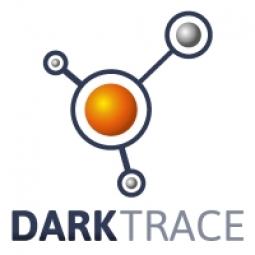Download PDF
Enhancing Cybersecurity with AI: A Case Study of KTR Systems

Technology Category
- Cybersecurity & Privacy - Intrusion Detection
- Cybersecurity & Privacy - Malware Protection
Applicable Industries
- Equipment & Machinery
- National Security & Defense
Use Cases
- Autonomous Transport Systems
- Tamper Detection
Services
- Cybersecurity Services
- System Integration
The Challenge
KTR Systems, a global company with over 1,200 employees and 24 subsidiaries, was facing a significant challenge in protecting its diverse and complex digital infrastructure from increasingly sophisticated cyber-attacks. The company's traditional security tools, which relied on historical data to detect threats, were proving ineffective against novel attacks. In 2019, KTR Systems fell victim to two instances of CEO fraud, confirming that their security measures were inadequate. The company's IT team was also limited in its ability to monitor global workforce activity around the clock. Furthermore, the company suffered an attempted ransomware attack, which, although thwarted before causing damage, highlighted the need for a more robust security solution.
The Customer
KTR Systems
About The Customer
KTR Systems is a global company with a diverse and complex digital infrastructure. With over 1,200 employees and 24 subsidiaries, the company has a vast digital ecosystem that requires robust protection from cyber threats. The company's IT team was previously reliant on traditional security tools that used historical data to detect threats. However, these tools proved ineffective against novel and sophisticated attacks, leading to instances of CEO fraud and an attempted ransomware attack. Recognizing the need for a more advanced security solution, KTR Systems turned to Darktrace's Immune System and Antigena Email.
The Solution
To address these challenges, KTR Systems turned to Darktrace's Immune System, a cybersecurity solution that uses Self-Learning AI to detect and respond to threats. The AI system learns the normal 'patterns of life' for every user and device in the organization, continuously revising its understanding based on changing behavior. This enables it to detect anomalous activity indicative of threats, including novel strains of malware and subtle insider threats that static rules and signature-based tools cannot detect. The company also implemented Darktrace's Antigena Email, which extends the Self-Learning AI protection to the email realm. This tool understands the human behind the keyboard, analyzing emails in context to form a nuanced and continually evolving understanding of communication across the business. It detects subtle deviations indicative of a cyber-threat and autonomously reacts in real time.
Operational Impact
Quantitative Benefit
Related Case Studies.

Case Study
Smart Water Filtration Systems
Before working with Ayla Networks, Ozner was already using cloud connectivity to identify and solve water-filtration system malfunctions as well as to monitor filter cartridges for replacements.But, in June 2015, Ozner executives talked with Ayla about how the company might further improve its water systems with IoT technology. They liked what they heard from Ayla, but the executives needed to be sure that Ayla’s Agile IoT Platform provided the security and reliability Ozner required.

Case Study
IoT enabled Fleet Management with MindSphere
In view of growing competition, Gämmerler had a strong need to remain competitive via process optimization, reliability and gentle handling of printed products, even at highest press speeds. In addition, a digitalization initiative also included developing a key differentiation via data-driven services offers.

Case Study
Predictive Maintenance for Industrial Chillers
For global leaders in the industrial chiller manufacturing, reliability of the entire production process is of the utmost importance. Chillers are refrigeration systems that produce ice water to provide cooling for a process or industrial application. One of those leaders sought a way to respond to asset performance issues, even before they occur. The intelligence to guarantee maximum reliability of cooling devices is embedded (pre-alarming). A pre-alarming phase means that the cooling device still works, but symptoms may appear, telling manufacturers that a failure is likely to occur in the near future. Chillers who are not internet connected at that moment, provide little insight in this pre-alarming phase.

Case Study
Premium Appliance Producer Innovates with Internet of Everything
Sub-Zero faced the largest product launch in the company’s history:It wanted to launch 60 new products as scheduled while simultaneously opening a new “greenfield” production facility, yet still adhering to stringent quality requirements and manage issues from new supply-chain partners. A the same time, it wanted to increase staff productivity time and collaboration while reducing travel and costs.

Case Study
Integration of PLC with IoT for Bosch Rexroth
The application arises from the need to monitor and anticipate the problems of one or more machines managed by a PLC. These problems, often resulting from the accumulation over time of small discrepancies, require, when they occur, ex post technical operations maintenance.

Case Study
Robot Saves Money and Time for US Custom Molding Company
Injection Technology (Itech) is a custom molder for a variety of clients that require precision plastic parts for such products as electric meter covers, dental appliance cases and spools. With 95 employees operating 23 molding machines in a 30,000 square foot plant, Itech wanted to reduce man hours and increase efficiency.





